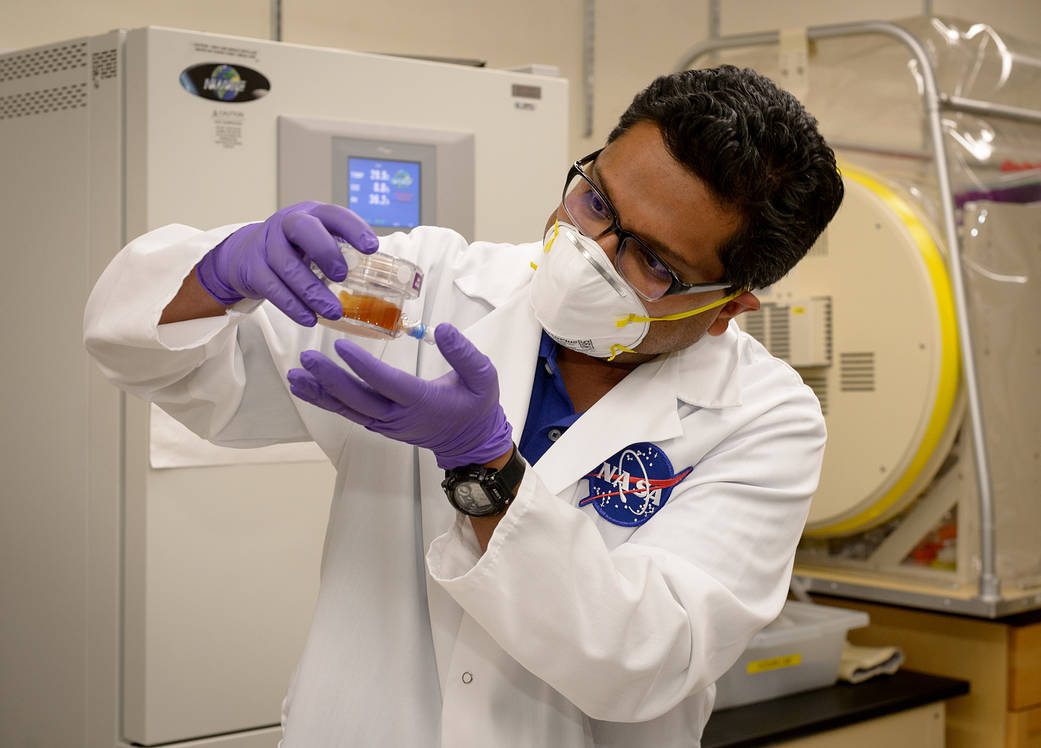Dark leafy greens and vibrant hued root vegetables, such as carrots and sweet potatoes, are rich in nutrients essential for health. But some vitamins, even those provided in the form of nutritional supplements, lack the shelf-life needed to span multi-year human missions to Mars, as envisioned by NASA’s Artemis program. Planning ways to supply astronauts with vital nutrients for long-duration missions may require making or growing it in space. NASA’s BioNutrients experiment is testing technology to do just that.
BioNutrients is more than halfway through a five-year trial aboard the International Space Station. The experiment, developed by scientists at NASA’s Ames Research Center in California’s Silicon Valley, assesses the stability and performance of a hand-held system to manufacture fresh vitamins on-demand in space. Astronauts are not consuming the nutrients during this study, but the products are intended to be safe to eat.
BioNutrients test units, called production packs, contain specially prepared microorganisms, in this case yeast, that churn out vitamins – beta carotene and zeaxanthin. Astronauts start the production of nutrients by grabbing a pack, which is stored at room temperature, adding water, shaking to mix the contents, and warming the packs in an incubator – a device that controls environmental conditions such as temperature.
Roughly once a year, a set of production packs that were stored on the space station return to Earth aboard a SpaceX Cargo Dragon resupply spacecraft. The BioNutrients team processes these packs in their laboratory at Ames, along with an additional set of packs that were never flown in space. On the same day as the ground experiments, an astronaut performs production runs aboard the orbiting laboratory. This helps the researchers see how well the system performs in space compared to on the ground. Here, Aditya Hindupur, lead scientist for the BioNutrients experiment, inspects one of the production packs after removing them from an incubator in a lab at Ames.
Even after 33 months in space, the yeast are visibly producing the orange-colored beta carotene and zeaxanthin nutrients. When samples from in-space production runs return to Earth, the BioNutrients team further analyzes them to measure the yeast’s growth and the nutrients they produced. The team examines how the packaging and the growth media, or “yeast food,” perform. Additionally, the team assesses how easy it is for the crew to operate the system as well as keep an eye on microbial contaminants to ensure the nutrients are safe for human consumption.
Credits: NASA/Dominic Hart





























